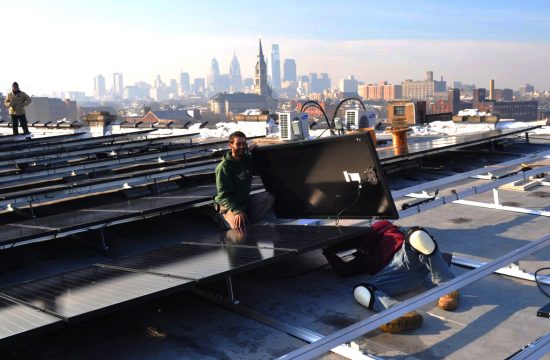This is part two solar of a two-part blog series. In this installment, we’ll highlight the potential for solar on city-owned property.
In Part 1, we discussed the solid foundation for solar development in Philadelphia and cheered the cost of installed solar continuing to drop nationwide. We also noted that action in Harrisburg is needed to increase the competitiveness of Pennsylvania’s Solar Renewable Energy Credit (SREC) market. So where does that leave us?
In addition to the market conditions outlined in Part 1, government entities have an added hurdle related to solar. Federal tax policy puts cities at an immediate disadvantage relative to the private sector. Tax-exempt entities like cities cannot take advantage of the 30% Solar Investment Tax Credit (ITC) or federal rules on accelerated depreciation of assets that help finance solar installations. While there is nothing to prevent the direct installation and ownership of solar panels by a city, no federal incentives can be used, thus making projects less attractive when compared to private ownership. Simply put, cities are not cost-efficient owners of solar projects.
To overcome this hurdle, the best option for governmental entities is to purchase electricity from solar through a power purchase agreement, or PPA. The Energy Office, housed within the Office of Sustainability, is currently exploring this option as a vehicle for projects on City-owned buildings. A PPA would involve a private solar development company entering into an agreement to build, own, and operate a solar system on City-owned property. The City would directly consume the solar electricity, and enter into a long-term purchase agreement of the electricity to pay for the installation. Because the panels are owned by a third party solar developer, the 30% solar federal tax credit and tax benefits associated with the accelerated depreciation of the solar would apply to the project, and allow the City to receive a lower electricity price in the agreement.
It should also be noted that when considering alternative energy systems, efficiency improvements should be considered first. By improving a building’s energy efficiency first, you reduce the size and cost of the solar system needed. Already, we have seen that energy efficiency measures in City facilities reduce costs effectively and has significant co-benefits, like increasing comfort, resilience and often addressing infrastructure that needs improvement.
Be sure to check our new website for updates as we explore opportunities for solar on City-owned facilities.

